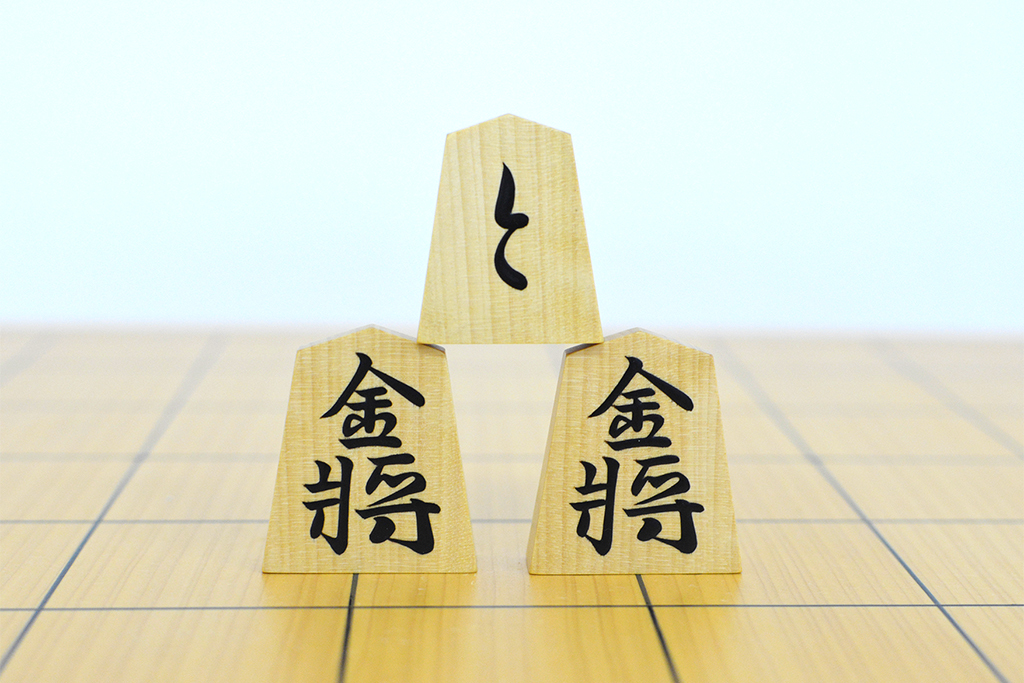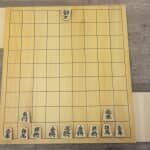Shogi 9 April 2020
Get Better Quickly! Effective Study Methods for Shogi Beginners #3 To-Kin
Hi,
I am Takashi Araki, a Shogi instructor for i-tsu-tsu Shogi classes in Motomachi, Kobe.
Since this newsletter features “To-Kin (Promoted Pawn)”, I will talk about To-Kin (Promoted Pawn).
Let’s Learn What To-Kin (Promoted Pawn) is!
Writer: Takashi Araki, a former member of Shorei-kai, who has a third dank rank.

1. To-Kin (Promoted Pawn) Is Part Angel and Part Devil
As you know, To-Kin (Promoted Pawn) is a piece promoted from Fu (Pawn), which is a kind of a good deal. If you don’t have To-Kin (Promoted Pawn) and finish a game, your efforts will be wasted. I think you may wonder what I meant with the word of a “good deal”. Let me explain it more.
The stronger a Shogi piece becomes, the bigger damage you will have when you lose it, in general. For instance, there are promoted pieces, Uma promoted from Kaku (Bishop) and Ryu from Hisha (Rook), which can move a lot and don’t have blind angles. They are perfect, but your attacking power will drop off badly losing them. Your opponent will gain a great benefit. They can be two-edged pieces.
What happens with To-Kin (Promoted Pawn)? The degree of its power is the same as that of Kin (Gold), but it comes from Fu (Pawn). Even if you lose it, your damage is minimum and your opponent will gain a little. This is what I meant to say with a “good deal”. There is a Shogi proverb saying “Having the same power as that of Kin (Gold), To-Kin (Promoted Pawn) is stronger than Kin (Gold)”.
There is another proverb to express the strength of To-Kin (Promoted Pawn): Go-san no To-Kin ni make nashi, which means a To-Kin (Promoted Pawn) on the square of 5c cannot lose. When you have To-Kin (Promoted Pawn), it helps you a lot. On the contrary, when your opponent has it, it can be very troublesome. It must be part angel and part devil.
2. Learn Tarefu!
Tarefu, or dangling Fu (Pawn), is a Shogi technique.
You, now, understand how important having To-Kin (Promoted Pawn) is, right? The next question is how to make To-Kin (Promoted Pawn). As you know, you can have it once your Fu (Pawn) reaches your opponent camp. It’s sure but it takes many steps. Even though you will get a good deal, you shouldn’t take a long time to get it.
The efficient way to make To-Kin (Promoted Pawn) is to use your hand piece. The best way is to drop Fu (Pawn) in your hand on the third or fourth rank and to aim at promoting the dropped piece. This best way is termed Tarefu in Japanese. Use Tarefu effectively, and you can gain the upper hand.
As far as I know, not a few players lost a handicap game, letting a handicap giver make Tarefu.
3. Abandon Fu (Pawn) to Get To-Kin (Promoted Pawn)
I’ve just said that you can get To-Kin (Promoted Pawn) effectively using Tarefu. I need to tell you more about using Tarefu, which requires two conditions.
The first condition is to have Fu (Pawn) on a piece stand as your hand piece. If not, you can’t drop it…haha.
The next one is not to drop Fu (Pawn) on the file which has already another Fu (Pawn). Doing so is prohibited as Nifu or double Fu (Pawn). From the initial position of Shogi pieces, you can see all files have Fu (Pawn) already. Even though you captured your opponent’s Fu (Pawn), until one of your files lose Fu (Pawn), you can’t drop it. It might sound strange, but the more you lose Fu (Pawn), the more you can use your hand piece of Fu (Pawn).
In summary, in order to make To-Kin (Promoted Pawn), you need to start to abandon Fu (Pawn) on the file where you are aiming at having To-Kin (Promoted Pawn). If you are aiming at having it on the square of 5c, you need to abandon Fu (Pawn) on the fifth file and drop your hand piece of Fu (Pawn) on the square of 5d.
Other than Tarefu, there is another technique named Tsukisute no Fu, which means a sacrifice push, to make To-Kin (Promoted Pawn) effectively. Both will help you in an actual game. Let’s try them!.



